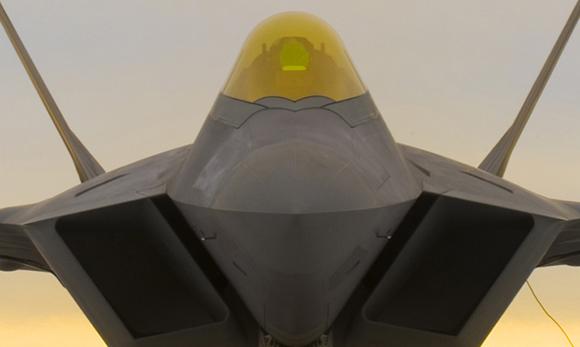The history of the first aeronautical settlements in the central-southern part of the United States undoubtedly presents its specific features but also brings out some regularities of the combination of economic, political-military and geographical factors that are at the basis of the realization of both airfields, both of the production facilities in the sector.
One of the characteristics through which the evolution of aeronautical technology has manifested itself (especially in the military field), consists of the design of fixed wing aircraft with increasingly reduced needs in terms of the length of the take-off and landing line, up to development of a capacity for vertical execution of these operations. At the beginning of the '900, however, they had to deal with more binding space requirements for the "heaviest of the air", also in consideration of rudimentary or totally non-existent airport infrastructures.
The need for spaces for the exclusive use of airplanes derives from the physical laws that make possible the dynamic support of a heavier body than air. In order for the airflow on the wings to reach the speed sufficient to generate the lift that allows the apparatus to rise, it is necessary that this can travel an adequate line of acceleration, flat, clear of obstacles laterally and at the ends, with a bottom compact. It is no coincidence that the first places of flight, in Italy, as elsewhere, were simple adaptations of flat surfaces destined for a completely different purpose, almost always "fields" in the most agricultural sense of the term (Giorgio Apostolo, edited by, "Ali and motors in Lombardy: a century of aviation history", Banca Agricola Milanese, 1995).
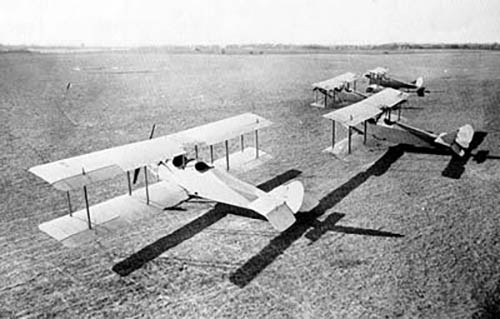 Just as it had been for some areas of Lombardy in the early decades of the twentieth century, certain areas of Texas and Kansas will offer natural tracks for the activity of pilots and builders of the period. For example, the birth of the first facilities dedicated to flying around Wichita in the early '20, is largely due to the availability of a wide flat expanse in the city (photo).
Just as it had been for some areas of Lombardy in the early decades of the twentieth century, certain areas of Texas and Kansas will offer natural tracks for the activity of pilots and builders of the period. For example, the birth of the first facilities dedicated to flying around Wichita in the early '20, is largely due to the availability of a wide flat expanse in the city (photo).
From this it is evident the advantage on which it could rely, especially in the pioneering phase, the development of hydroaviation given that courses and ponds of water represented ideal surfaces for takeoff and landing maneuvers, not requiring complex and expensive works of drainage and leveling of the ground.
In the same way as for political lines, scientific progress or artistic and cultural movements, even the history of industry, articulated in the dynamics of development of the different sectors that compose it, is embodied by men. In this sense, the figure that many scholars consider of greater technical thickness and the most representative of the first decades of life of the Italian aeronautical industry, is that of Gianni Caproni (1886-1957).
Born in Massone di Arco, in the province of Trento, Caproni attended the Polytechnic University of Munich where he graduated in civil engineering in the 1907. In the following two years he took a postgraduate course in electrical engineering at the Montefiori Institute in Liège and it was during this period of study in Belgium that the young engineer from Trentino came into contact with the first developments in the aircraft that were taking place in neighboring France.
Caproni built his first motor airplane (a biplane made entirely of wood and baptized Caproni Ca1), in the 1909, but the area of Arco presented space problems, so it was decided to move from the then Austrian Trentino into Italian territory, choosing to settle in the Alto Milanese, near the locality called Cascina Malpensa.
Bearing in mind that the move was made by train, the Gallarese moorland was one of the closest choices in terms of distance and allowed to make the best use of the northern railway network which was the most developed of the peninsula. The biplane was disassembled and loaded onto the wagons arriving in the area of the current Lombard intercontinental airport, in April 1910.
The Malpensa area at the time was nothing but a large lawn, in fact the dialect word "Brug" (descending from the Celtic "brucus"), from which it derives heath, indicates the heather, a plant that fits well to the part high in the Po Valley, typically more arid than the lowlands. This space was used by Austria since 1821 for military maneuvers and exercises. In the 1886 it becomes property of the Royal Army Ministry of War which will later allocate it to the aviatory activity and Caproni will obtain its use for the testing of its biplane, upon authorization issued by the Milan Military Engineering Department.
Between the 1910 and the First World War, in the localities of Cascina Malpensa, Vizzola Ticino, Cascina Costa and Busto Arsizio, we will witness the rise of all the structures (hangars, tracks, workshops, etc.) necessary for the aviation activity that will this geographical area is one of the first and most important Italian aeronautical settlements.
Among these brief hints it is worth stressing the prominent role played by the local hydrography once again, which was one of the elements on which the development of agriculture and then the electrical industry of northern Italy was based. The story was repeated with the first steps moved by the aeronautics, especially with regard to the realization of a specific type of aircraft: the seaplane.
 In the construction of these devices will be distinguished in particular: the Nieuport-Macchi, which will base its plants on the shores of Lake Varese (Hydro-Scalo of Schiranna), and the SIAI (Società Idrovolanti Alta Italia which will become Italian Society of Seaplanes Savoia Marchetti in 1937 ), which installed its units for the construction and testing of these machines in S. Anna, a hamlet of the Municipality of Sesto Calende, on Lake Maggiore (in the photo on the right a seaplane S.57 in 1935).
In the construction of these devices will be distinguished in particular: the Nieuport-Macchi, which will base its plants on the shores of Lake Varese (Hydro-Scalo of Schiranna), and the SIAI (Società Idrovolanti Alta Italia which will become Italian Society of Seaplanes Savoia Marchetti in 1937 ), which installed its units for the construction and testing of these machines in S. Anna, a hamlet of the Municipality of Sesto Calende, on Lake Maggiore (in the photo on the right a seaplane S.57 in 1935).
In all this picture there is still no "ingredient" to consider among the reasons for the localization of the aeronautical industry in Northern Italy. The construction of airplanes is not a basic manufacturing activity, so you can not move from the cultivation of fields to the assembly of aircraft by simply leveraging on natural resources, political will or entrepreneurial initiative.
The aeronautical sector occupies the top of the industrial chain due to the complex mechanics and the project and production contributions "flagship" come together both in areas that have a historically closer relationship (such as the car sector), and the various operators that occupy the various steps of the extended chain of components.
Naturally, at the same time, the development of production processes and aeronautical technology generates returns along the entire supply chain, in the dynamics of a dialectic relationship which also includes the protagonists of a series of other sectors: woodworking, metallurgy, electricity, chemistry and more recently electronics, IT, composite materials, 3D printing, etc.
Hence from birth, one of the prerequisites for the development of the aeronautical industry must be considered the presence of a certain level of pre-existing "industrial sedimentation". In this regard, taking into consideration the data reported by Vera Zamagni and concerning Lombardy: at the 1911 census, in total terms, 30% of value added, 25% of profits, 20% of industry employees concentrated in the region ("Industrialization and regional imbalances in Italy", il Mulino, 1978).
On the basis of these few but significant figures, it is clear that in the abstract the Italian aeronautic industry could indifferently be born in any region or province of the peninsula (after all it is not that in Italy there were no other flat spaces), but the geographical conditions more advantageous and the productive background more favorable for the settlement of the pioneers of the sector, they were certainly present in the Lombard part of Northern Italy.
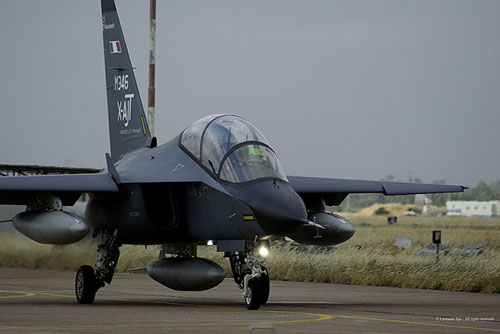
The growing interest of politics and military necessities (from the XI-XXX-XUMX Italian-Turkish war of Libya that led to the subscription called "aviation fleet", to the two world conflicts), did the rest in the process of birth and development aeronautical in the area then between the provinces of Como and Milan. In fact, the province of Varese, which will subsequently earn the title of "province with wings" or "province more aviatoria of Italy", will become an autonomous administrative identity in the 1911.
Today, some of the world's leading players in the sector operate in the Varesotto aeronautical district, such as Agusta-Westland, which makes helicopters for all types of roles, and Alenia-Aermacchi, specialized in trainers (fixed wing). As is known, they are both part of the Leonardo group (formerly Finmeccanica), respectively in the Helicopters and Airplanes divisions.
Unlike Lombardy, the South of the United States did not offer a starting point of significant industrial density on which to base the start-up phase, and the subsequent development, of the aeronautical sector. On the other hand, the wealth of hydrocarbons in this territory implied a great energy potential and a high availability of fuel at hand and therefore low cost, an advantage that will combine with the electrification resulting from the cycle of public investments of the New Deal.
As we have already seen on another occasion, the industrial policy for the South pursued by the Roosevelt administration, and in some cases the requests inspired by national security reasons of the same military summits, led to the relocation in the States of this region of a part of the production facilities of the war industry.
The orders related to the mobilization for the Second World War provided the ideal market outlet for the American industrial apparatus and will have a corroborating effect for the entire US economy which in practice will definitely come out of the 29 crisis only thanks to the orders linked to the conflict. On the national territory this production cycle will follow a dynamic of differentiated deployment according to the respective stages of development of the different regional areas.
It can be assumed that, while the Midwest and the Northeast reoriented their industries (expanding their plants anyway), towards the military production, the South became industrialized under the pressure of the needs that emerged from the battlefields, which impressed a strong impulse towards a combined effort between entrepreneurial initiative and industrial policy of the federal government.
So in this region the Second World War played the same role played by the Great War against the industrialization of Italy, which saw its own groups (just think of FIAT and Ansaldo), becoming really big thanks to the supplies for the Armed forces.
Thus, during the 40s, the South and the West of the stars and stripes federation knew the establishment (among others) of a powerful aeronautical sector that will become aerospace with the race to militarization of space whose beginning is conventionally fixed to October 4, 1957, the date on which the Soviet Union launched the Sputnik I satellite into orbit: a metal sphere with 4 antennas, a diameter of 58 cm and a weight of 83,6 kg (mostly "occupied" by the power), which completed its first circumnavigation of the earth in 1 hour and 35 minutes.
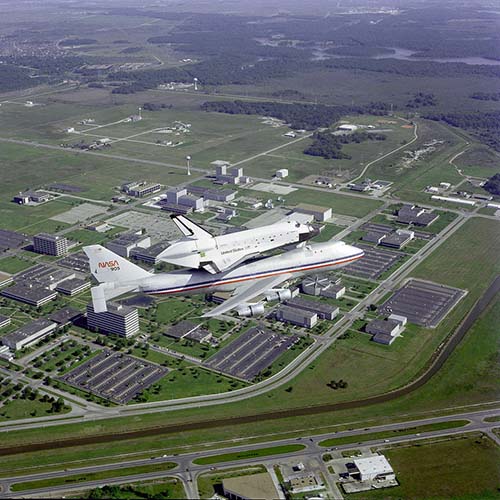 In the following decades affected by this competition (in which we will distinguish 3 presidents in particular: the Democrats John Kennedy and Lyndon Johnson in the years '60, and the Republican Ronald Reagan in the years' 80), the South and the West Coast become real and its aerospace regional areas, both in industrial terms and installations for launching.
In the following decades affected by this competition (in which we will distinguish 3 presidents in particular: the Democrats John Kennedy and Lyndon Johnson in the years '60, and the Republican Ronald Reagan in the years' 80), the South and the West Coast become real and its aerospace regional areas, both in industrial terms and installations for launching.
In particular, the city of Houston has been assigned the role of center of the US space programs at the beginning of the 60 years, by the then vice president and director of the National Aeronautics and Space Council (as well as the Texas senator), Lyndon Johnson, thus becoming the capital of mission planning and control activities.
Today, in the NASA facilities that are part of the Johnson Space Center in Houston (photo), they play a part of their training and related refresher courses and refresher courses, including European astronauts, such as the French Thomas Pesquet and the Italian Samantha Cristoforetti.
The waves of restructuring of the 70 and 80 years triggered by the oil crisis and the production overcapacity of the automotive and steel sectors, will penalize mainly the industrial settlements of the Great Lakes and New England areas, while the South and the West will suffer minor measure keeping their growth trend.
This is thanks to a more flexible local labor market, greater availability of energy supply at competitive costs (from the Texas, Louisiana, California and Alaska fields), and a link - favored by the position - more direct with the Asian market in full expansion. Without forgetting that in this context, despite all the problems that still accompany the phenomenon, the strong Hispanic immigration from Latin America has made a great convenience.
Closures, reductions in production capacity and personnel cuts on the one hand, the opening of new plants, the expansion and expansion of those already present, as well as the development of production linked to the entire industrial defense supply chain on the other , generated in those years a common sense according to which now in the Midwest and especially in the North-East, we are dedicated to research and innovation while manufacturing has become a prerogative of the South and the West.
In reality, the situation has more nuances and, as usual in these cases, reference should be made to prevalent traits and not to exclusive marks. A confirmation in this sense is found in the data processed by some institutions (American Enterprise Institute and IRẾC: Institut de Recherche en Ếconomie Contemporaine), which invariably show some oscillation but which in their average values indicate a reliable order of magnitude in order to identify trends.
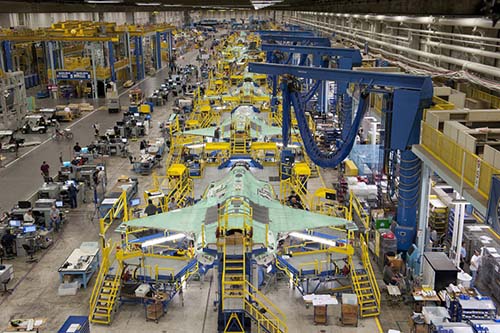 If, for example, the industrial workforce of Defense, Midwest and Northeast are considered, they total about 25%, while South and West are respectively weighted for 39% and 36%. Regarding the Research and Development activities, the values are in the same order: 45%, 21% and 34%. If we take the individual states, both rankings see California in the lead with 23% of industrial labor and 33% of technicians and researchers, followed in the first case by the State of Washington (12,5%) and Texas (9%), and in the second from New Jersey and Massachusetts with the 9% each.
If, for example, the industrial workforce of Defense, Midwest and Northeast are considered, they total about 25%, while South and West are respectively weighted for 39% and 36%. Regarding the Research and Development activities, the values are in the same order: 45%, 21% and 34%. If we take the individual states, both rankings see California in the lead with 23% of industrial labor and 33% of technicians and researchers, followed in the first case by the State of Washington (12,5%) and Texas (9%), and in the second from New Jersey and Massachusetts with the 9% each.
The ranking of metropolitan areas reflects these relationships, with Los Angeles holding the record both in the presence of industrial warehouses and research laboratories, followed by Seattle and Dallas as regards the manufacturing part, and by Washington DC-Baltimore and Boston, for R&D activities.
The scenario outlined by these figures is the result of a decades-long process of modifying the economic and demographic weights within the federal borders, which has produced a real reversal of relations between the US regions.
At the beginning of the first mandate of Franklin D. Roosevelt, between the 1932 and the '33 (as is known, the president is elected in November and settles, unless he reconfirms in which case obviously there is no solution of continuity, in the following the month of January, which previously took place in March), in the Great Lakes and New England area there was a total of 49% of the population, while the South and the West Coastal (thus excluding the States of the Rocky Mountains region) ), registered 35% (28% and 7%, respectively). At the dawn of the third millennium, the former had gone to 35% and the latter to 52%, with the South to 36% and the West (always limited to the coastal strip), to 16%.
When Kennedy, 25 May 1961, launches the challenge of creating a space exploration program with the aim of: to land a man on the moon and get him safely back to Earth, the area comprising the Midwest and the Atlantic area could boast the 40% of the American GDP, with the South and the West Coast standing at 38% (24% and 14%). Four decades later, the areas of more traditional settlement showed a substantial tenure with 39%, while the South and the Pacific coast had moved to 50% (33% and 17%).
Focusing on the South, the highest expression of this change in internal equilibrium is represented by Texas and Florida, which in 1960 had 9,5 and 5 millions of inhabitants respectively, which became 27,7 and 19,9 in 2014. So the "Lone Star State" (definition derived from the Texan flag) and the "State of the 3 S" (sea, sand and sun), occupy the 2 ° and the 3 ° step of the federal ranking by population, behind California ( about 39 mln of inhabitants), and in front of the State of New York (19,8 mln).
If we consider GDP, Texas and Florida occupy the second and fourth positions, with respective values of 1.414 billion of dollars (given to 2013), and about 800 billion of dollars, ranking between California (1 ° with 2.450 mld) ) and New York (3 ° with 1.350 mld). It should be noted that if they were independent states they could aspire to be part of the G20.
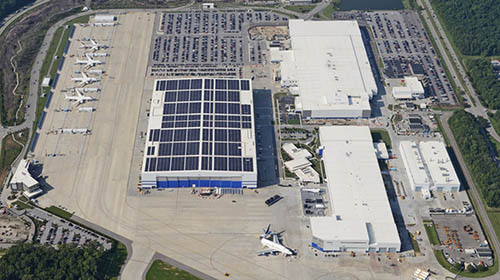 Just to get an idea of the current state of rooting of the aeronautical sector in the Sun Belt (the "belt of the sun" that goes from the States of the South to the Atlantic), you can sketch a brief overview, starting from the Boeing factory in North Charleston (photo), in South Carolina, which hosts the second assembly line - after Everett, near Seattle - of the 787 Dreamliner.
Just to get an idea of the current state of rooting of the aeronautical sector in the Sun Belt (the "belt of the sun" that goes from the States of the South to the Atlantic), you can sketch a brief overview, starting from the Boeing factory in North Charleston (photo), in South Carolina, which hosts the second assembly line - after Everett, near Seattle - of the 787 Dreamliner.
In the second half of the 2015, the construction of the assembly line for the Airbus plant in Mobile, Alabama, was completed, where the European manufacturer already had a design center. Here we are dedicated to the realization of aircraft of the A319, A320, A321 family. The local branch of the helicopter division of the Toulouse group (Airbus Helicopters former American Eurocopter), is located in Grand Prairie, Texas, where it has its registered office while in the city of Columbus, Mississippi, has a production center.
Texas is also home to the Bell Helicopter Textron, which can also rely on the Amarillo and Fort Worth production sites. In this last town near Dallas, there are the Lockheed-Martin systems for the assembly of the central section of the wings of the F-35 (in its three variants), and of the F-16, as well as the realization of some components of the Japanese F-2.
Finally, another important installation of the Bethesda group is located in Marietta, Georgia, where the C-130 Hercules and the F-22 Raptor are assembled (photo opening), and the avionics and engine update programs were undertaken of the C-5 Galaxy.
The business branch is also well represented here, with Gulfstream Aerospace Corporation (a subsidiary of General Dynamics from 2001), which designs and builds a wide range of business jets at its plants in Savannah, Georgia. maintenance and after-sales assistance.
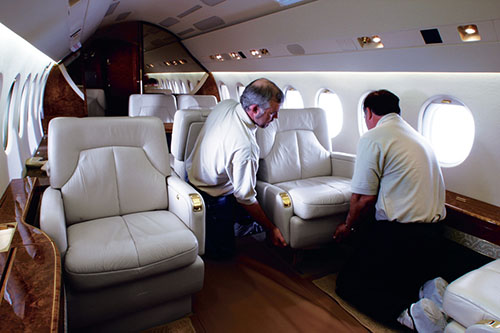 In Little Rock, Arkansas, there is one of the largest settlements in Dassault (Dassault Falcon Jet), in which the Hexagon group performs the entire range of finishing operations: assembly and integration of instrumentation, interior design, painting etc.
In Little Rock, Arkansas, there is one of the largest settlements in Dassault (Dassault Falcon Jet), in which the Hexagon group performs the entire range of finishing operations: assembly and integration of instrumentation, interior design, painting etc.
In March of 2012 the Brazilian Embraer announced the creation of a design center in Melbourne (a Florida town famous for being the birthplace of Jim Morrison 8 December 1943), in order to support the local production lines as directly as possible of the Legacy 450 and 500 models and the previous Phenom 100 and 300.
The intensification of the aeronautical industry's territorial settlement network and the development of aerospace activity are at the same time the result and one of the components that has contributed most to the shift of the US demographic and economic center of gravity towards the South and the West.
Ultimately, in the light of the steps listed above, it can be argued that in terms of industrialization and urbanization, the "conquest of the North American frontier" continued throughout the twentieth century (also) "on the wings" of the business groups of the aeronautic industry.
Read also:
"WEAPONS AND "WORKERS OF KNOWLEDGE" FOR THE EST ESTATE OF THE UNITED STATES"
"THE MIDWEST AND THE NATIONAL RESERVE OF THE BELLICA US INDUSTRY"
"STATE INTERVENTION AND WAR INDUSTRIALIZATION FOR THE SOUTH OF THE USA"
(photo: web / Leonardo / NASA / Lockheed Martin / Dassault)

